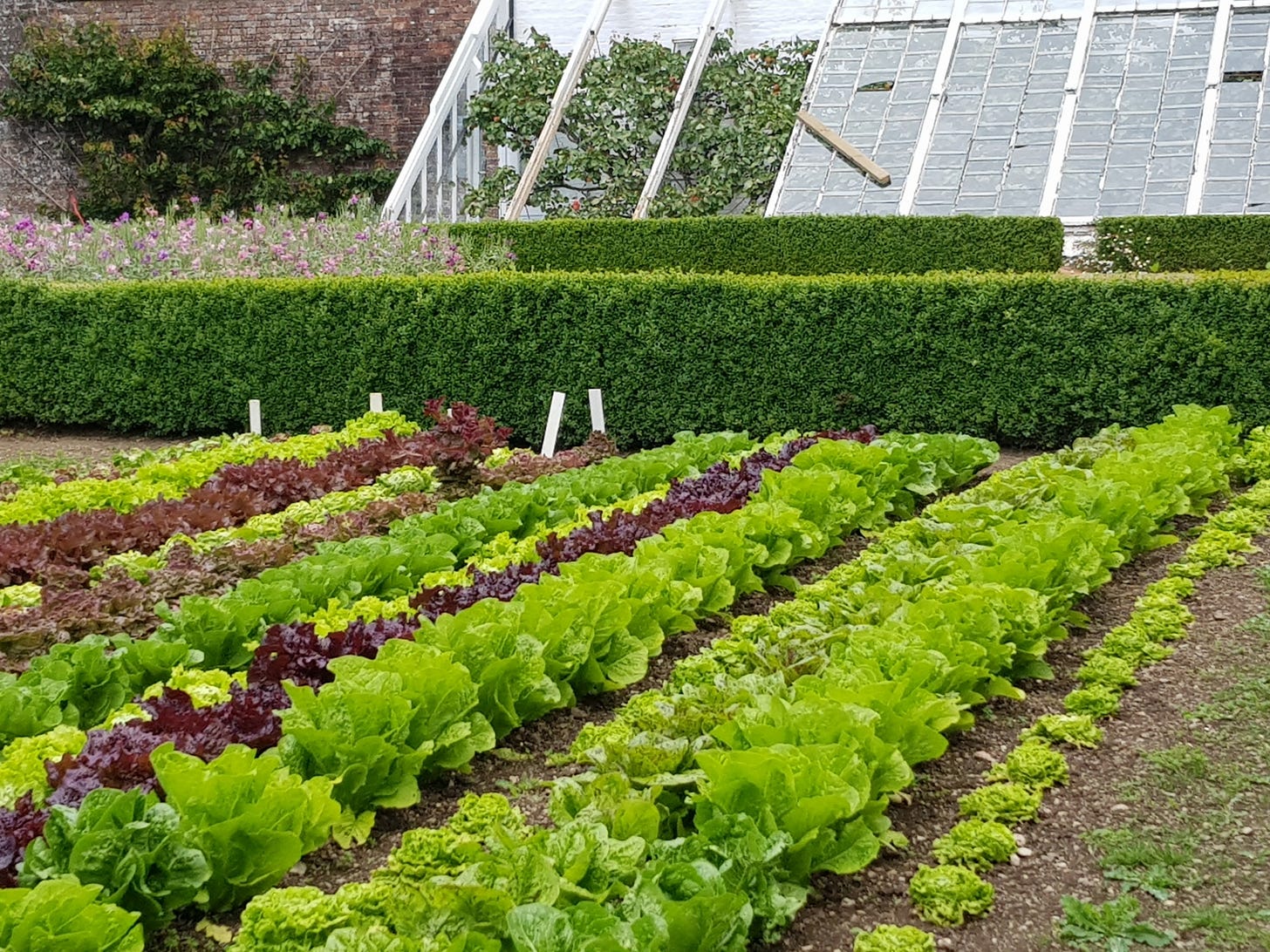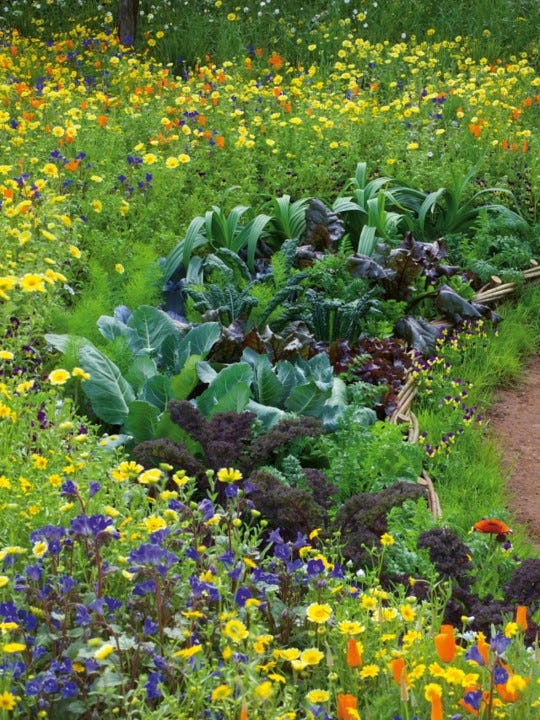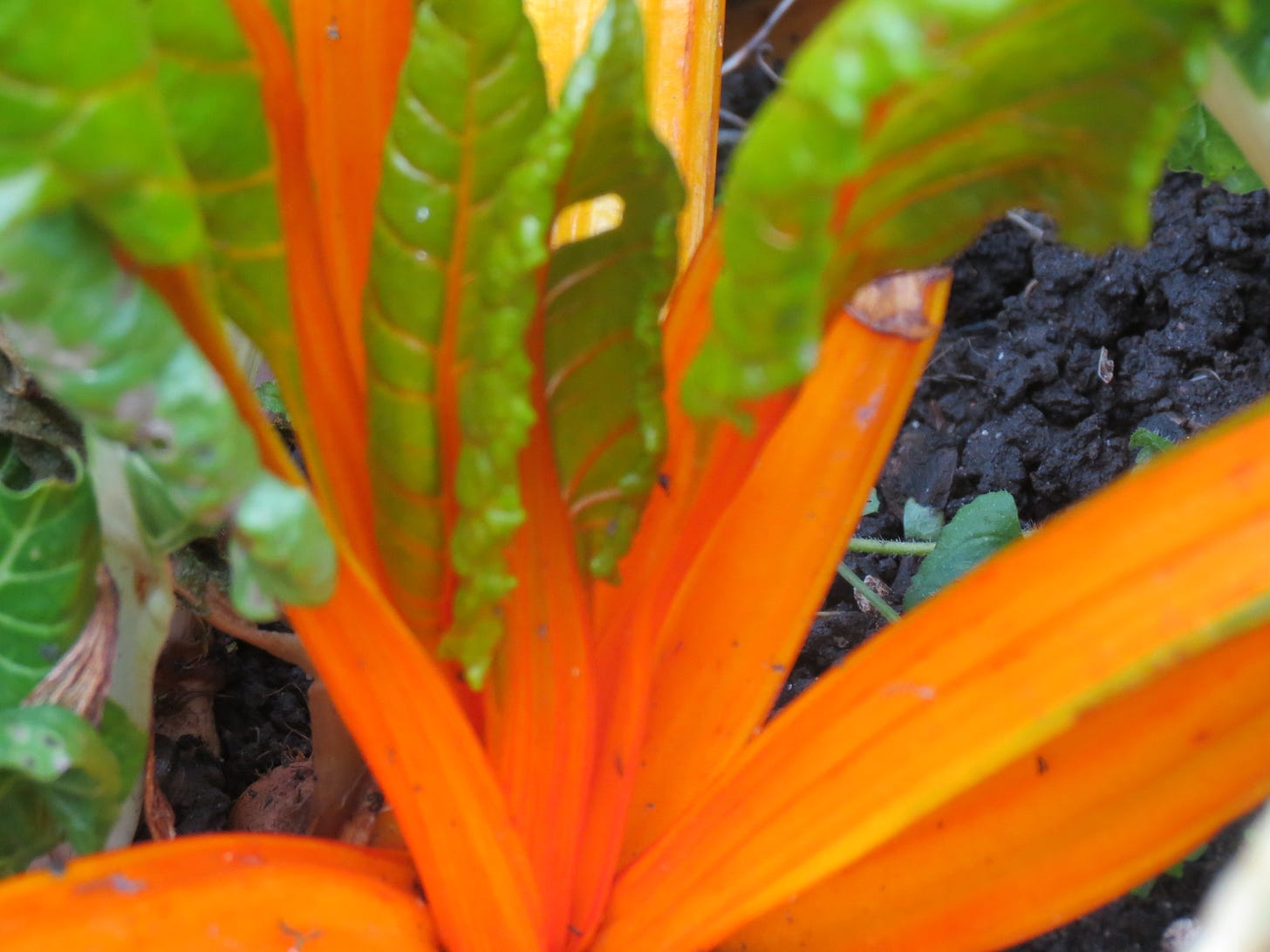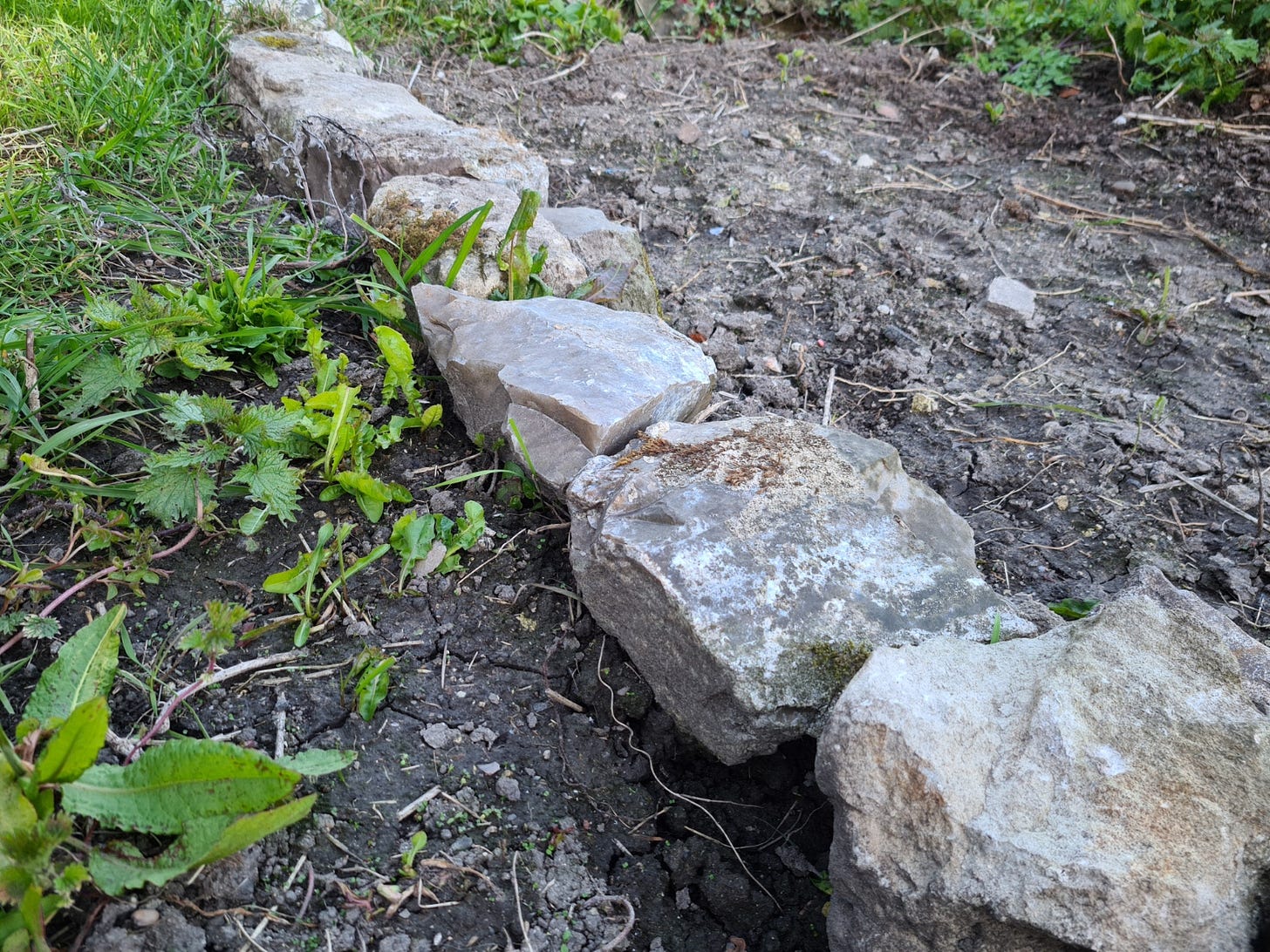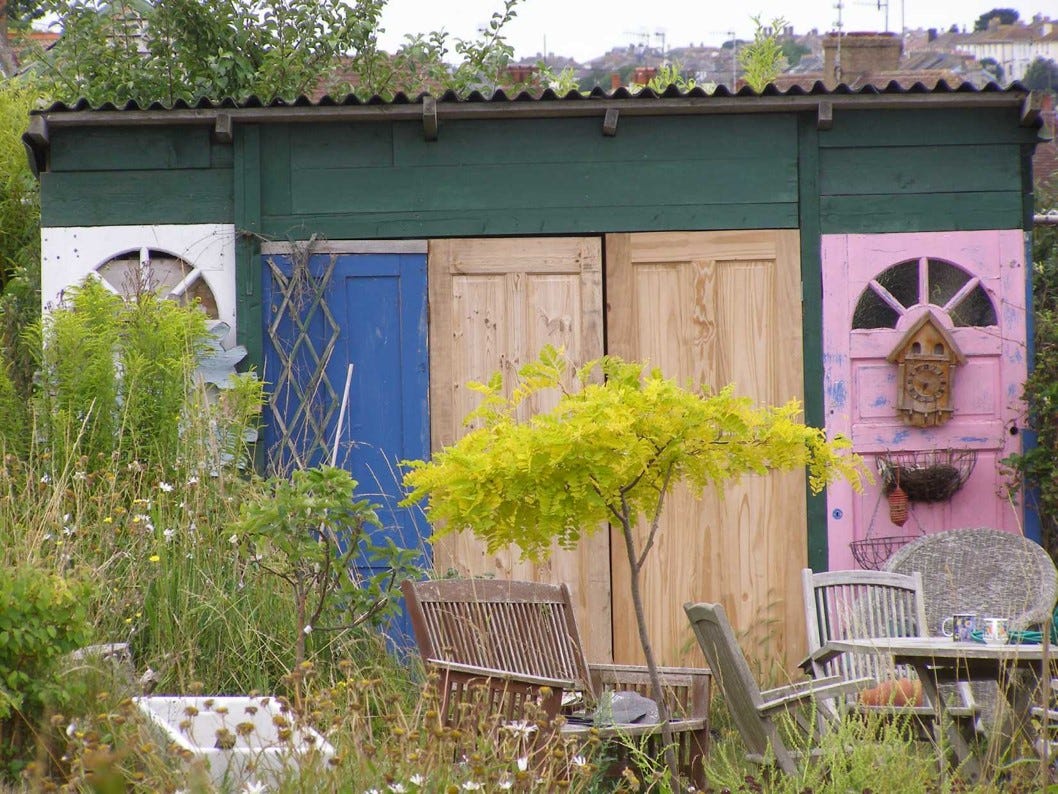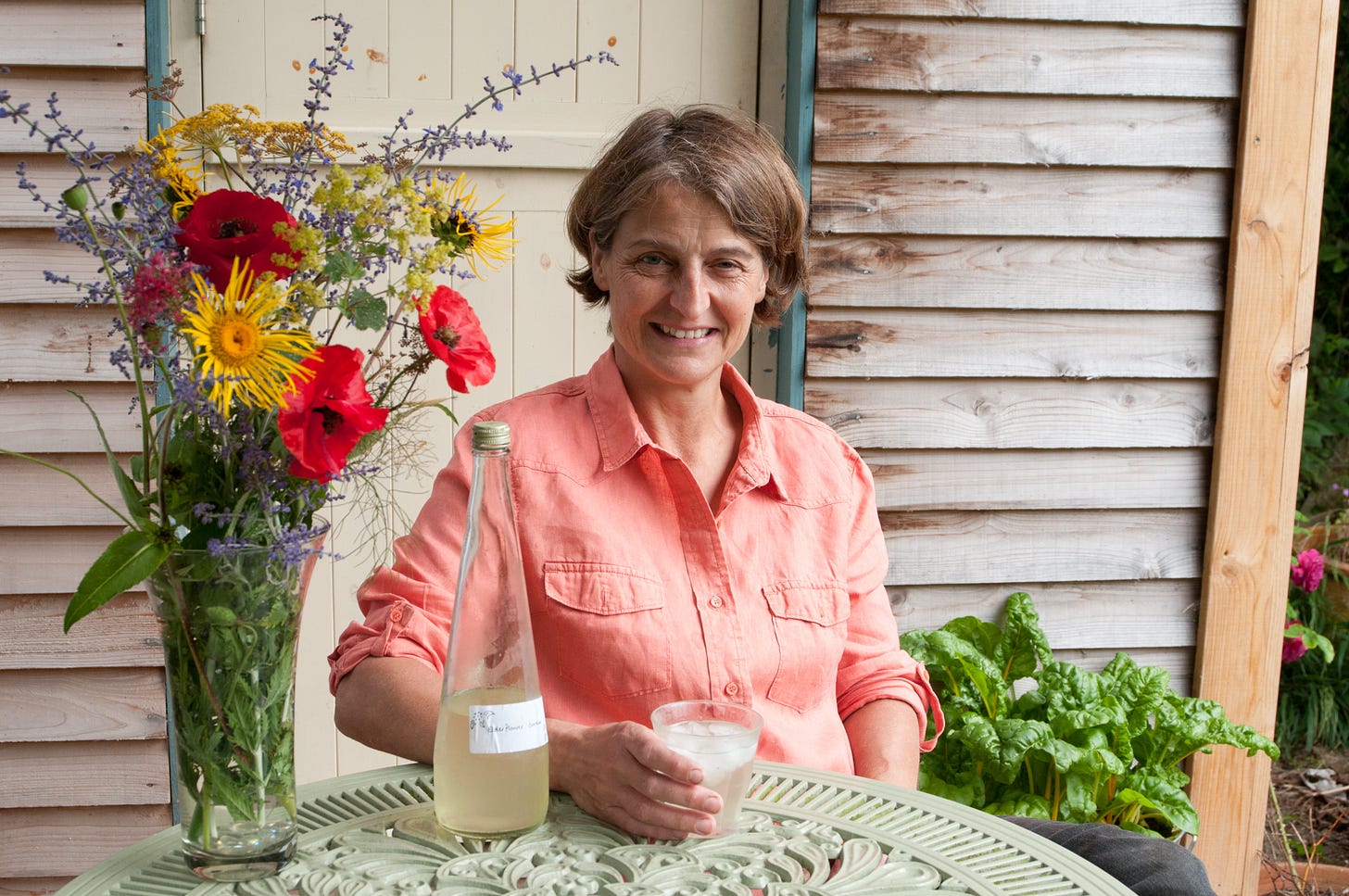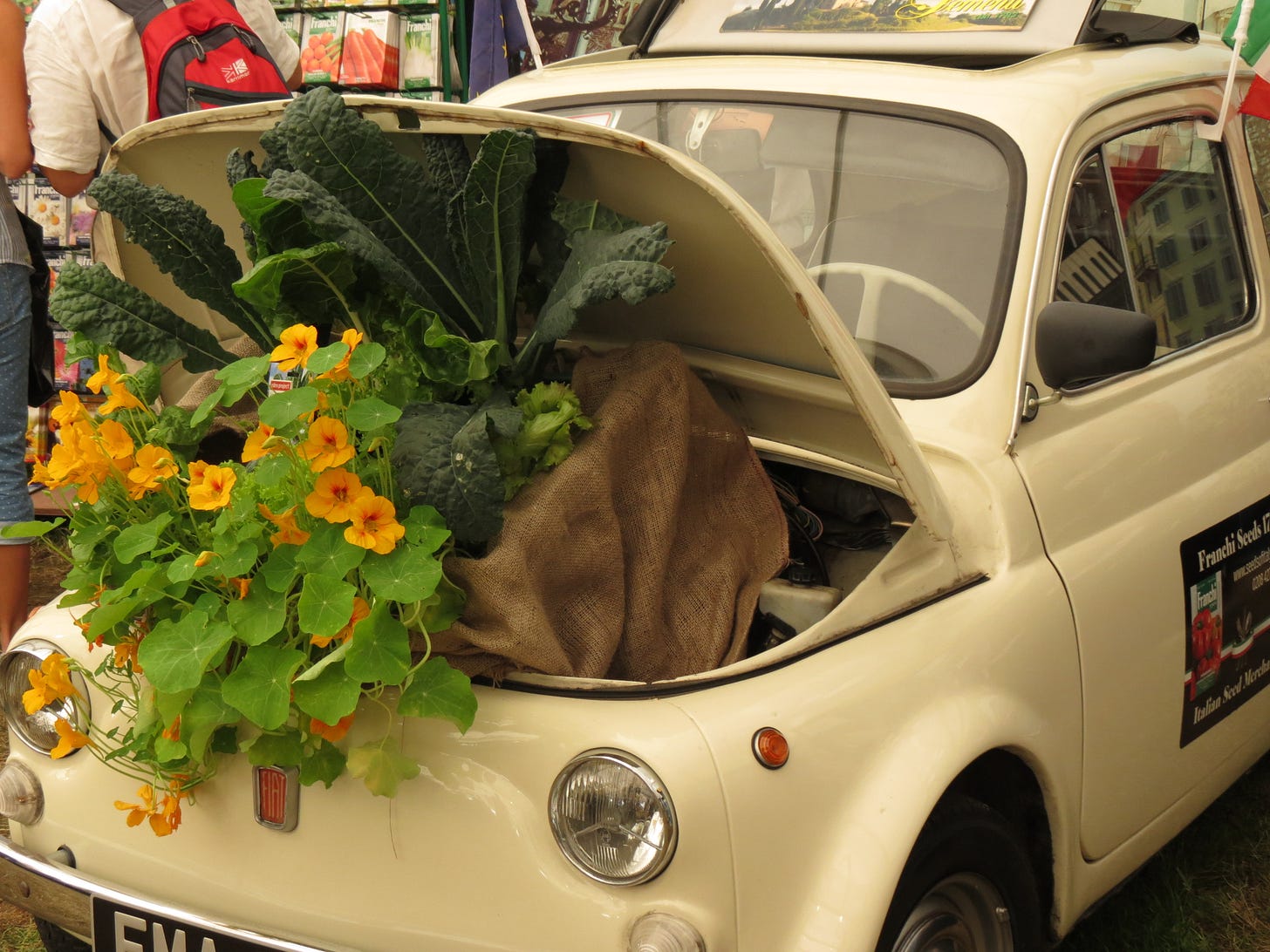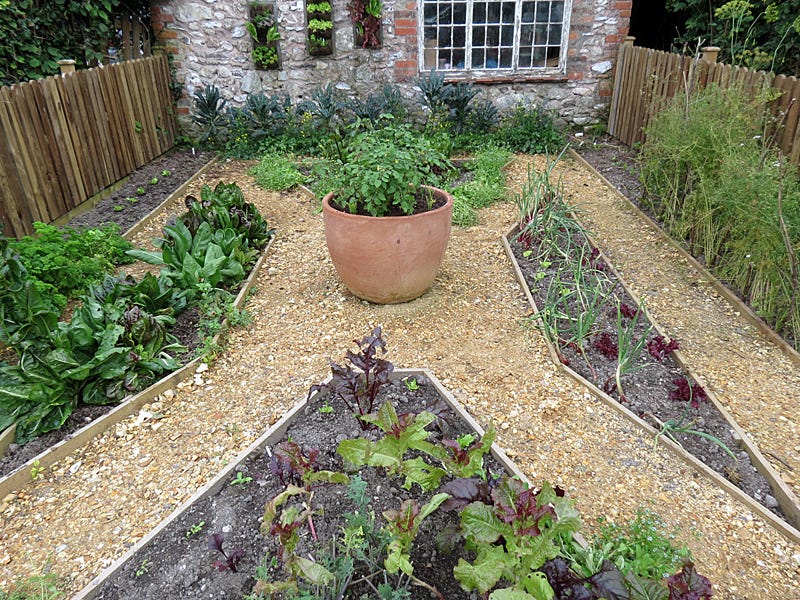Right, this month I've got a bit of a bombshell for you.
Veg gardens don't have to be scruffy. It’s not compulsory to have piles of old netting in corners, or pallets rotting into the grass, or broken-down sheds.
They don't have to be super-neat, either: you don't have to grow veg in rows, and even if you do the rows don't have to be straight. And rectangular beds are not compulsory.
I know. Shocking, isn't it?
All these diktats about the way you do things when you’re growing stuff to eat have been handed down across generations. But rules are made to be broken. They may have grown veg in regimented rows in Victorian times, and very impressive they looked too. But perhaps it’s time to move beyond the 19th century.
There's absolutely no reason why vegetable gardens shouldn't be beautiful, too. After all, with such gorgeous plants as blood-red rhubarb, frizzy green curly kale and red-and-white flowered climbing beans at your disposal, you've already got the raw materials.
So as you move into turning your dreams into reality, break the 'rules' a bit and let your creativity run riot. You're going to spend a great deal of time here, so you may as well make it somewhere you really want to be. Enjoy yourself and express your personality, and you'll end up with a space that's uniquely yours. Here are a few ideas to get you started.
Triangular beds
Obviously, rectangular beds are very practical. But they can be so boring.
You wouldn't lay out your ornamental garden in regimented rectangles, would you? Try thinking what you might have done with the space if it wasn't a veg garden.
Triangles zig-zagging across the plot, or zooming into a point in the middle, are immediately striking. Using beds on an angle like this is an old designer's trick: if you look down the garden, the lines encourage your eye across, rather than straight down the middle, so the space seems wider and bigger.
And don’t stop at triangular: try L-shaped beds, or squares, or curves. Fit them into your space in geometric, perhaps symmetrical patterns and make yourself a French-style formal potager: strong patterns give a garden what they call in the garden design world “good bones” – so it’ll look just as good when your beds are empty as when they’re full.
Just one rule: whatever shape your beds are, don’t make them too small, or too narrow. You’re aiming for practical AND pretty: so 60cm (2ft) width is a minimum, and it’s much better if you can manage 1.2m (4ft) or larger.
Non-straight rows
The team at the Eden Project in Cornwall grow veg on a massive, gently-sloping bank. It's a sumptuous tapestry of cabbages, chard, onions, lettuce and parsley interspersed with flowers: but they've thrown out the rule book, and instead of growing them in arrow-straight rows, they curve them into a beautiful parabola, each row of veg tucked protectively around the one before.
As well as curves, try zig-zags, perhaps across several veg beds. Or plant cabbages in a cross and fill the spaces with V-shaped rows of lettuces, radishes and onions. Let your imagination run riot: if you don't like it, you can always change it next year.
Steel bean supports
Here's another veg plot 'rule' to chuck out of the window: beanpoles don't have to be canes, or hazel rods, and they don't have to be set up in classic A-frame rows.
Cast iron reinforcing rods have a satisfyingly Mad Max feel and can often be scavenged from skips or bought from the DIY shop, and they last forever. They look great in wigwams, lashed together with rusted chains as designer Cleve West does on his allotment: the burnt ochre metalwork looks fabulous against fresh green foliage. Or grow your beans up a row of old stepladders, or over the side of the shed.
Planting pretty
Rows of the same vegetable are smart, and produce bumper crops, but if you're after something prettier make the most of your veggies' natural beauty.
Contrast spear-like leek leaves with big, ruched lettuces; beefy black Cavolo Nero kale and the vivid scarlet foliage of 'Bull's Blood' beetroot. Mixing your veg like this has other benefits: pests can't find their targets as easily if they're jumbled up with other plants.
Alternate lime-green Lettuce 'Salad Bowl' with scarlet 'Red Salad Bowl' to edge beds, or let scarlet nasturtiums scramble around the feet of purple cabbages (they'll suppress weeds, too). Before long your veg beds will look every bit as good as they taste.
Frilly edges
A little definition works wonders in the veg plot: it'll help you remember where you're supposed to be growing things, and shows off your plants. It also gives you another chance to get inventive.
For the formal look, go for your standard arrow-straight scaffold boards or bricks. But here are a few alternatives.
large stones fitted roughly together, like an ersatz drystone wall: if they’re large enough you can stand them up vertically and sink them into the ground a little to keep them in place.
roof tiles, sunk to half their length in the ground and backed with a board to keep them straight
short lengths of hazel hammered into the ground every 15cm or so with willow woven through
bendy prunings with each end stuck in the ground to make overlapping arcs
low-growing herbs like thyme, parsley, frothy marjoram or regimental chives
Decorate the shed
If you can, build your shed yourself from reclaimed odds and ends of wood: it'll be cheaper, and far more 'you'. Allotment holders on the Moulsecoomb site in Brighton have made sheds out of sheets of corrugated iron, old shower screens, front doors and advertising hoardings.
Even if your shed is made of good old-fashioned boards, a lick of paint works wonders. Paint it all one colour, or get the beach hut vibe with blue-and-white stripes. Get the kids to paint murals; hang pots from brackets and paint a 'picture frame' around them; or make letters from modelling clay and write poetry on your walls. You're only limited by your imagination.
Green roofs
Standard roofing felt, let's face it, is not a good look. Luckily, it's not too difficult to cover it up with a beautiful, organic and tasty alternative.
Herbs like thyme, marjoram and chives work well on roofs as they're low-growing, light, and relish the dry and bright conditions up there (unlike salads, which will wilt).
Double-check your shed is strong enough to take the weight of damp compost, fully-grown plants first; you can always reinforce them if necessary. Then attach boards around the top of the shed to hold the soil, and protect the roof with plastic sheeting, punctured along the lowest edge to allow water to drain away. Mix compost with perlite, a lightweight drainage material, and fill your roof before planting. Don't forget to add a ladder - both to admire your creation and to pick it!
Outdoor kitchens
It's not all work, you know. Long summer evening barbecues with friends and family at the plot, where fresh food is just an arm's stretch away, can become a habit.
So when you plan your seating area, make it big enough to entertain. Wood-fired earth ovens, fashioned from sticky clay soil and sand, add fresh-baked bread and pizzas to the menu. Outdoor fire pits, too, are straightforward to build and lovely for people to sit around (especially if they've got foil-wrapped potatoes to bake in the ashes). But if that's all too much like hard work, an old-fashioned barbecue will do the job nicely: just add friends.
Creative containers
Ring the changes with some decorative containers packed with herbs, strawberries or chillies, and you've got yet another outlet for your creativity.
Colanders make wonderful hanging baskets: just undo the handles and attach fine chains in their place. Paint tin cans in pretty colours and nail them to the shed in a row before filling them with herbs. Spare wellies double up as home for a pepper or some coriander; wine crates make great baby-leaf salad boxes; and all sorts of other containers can be pressed into service from old toolboxes to hats, kettles, buckets, sinks or even lavatories (clean, of course!)
Scarecrows
Sometimes, personalising your plot is pure, unadulterated fun. Two lengths of wood, some hessian sacks or old pillowcases, a pile of old clothing and some straw or newspaper for stuffing and you've got an instant allotment friend (admittedly, not a very talkative one).
Dress your scarecrow to look just like someone you know, or do your own tribute to a favourite (or not-so-favourite) celebrity. Get children involved and they'll come up with their own imaginative creations. Whenever you fancy a change, just find some more clothes: as well as bringing a smile to your face every time you visit the plot, you should find he keeps a few crows at bay too.
Top technique: The Potager Approach
A potager, or decorative kitchen garden, lies somewhere between the mish-mash of a cottage garden and the grand formality of the Victorian kitchen garden. They're often found in back gardens, where space is limited, as a way of making vegetable gardening easier on the eye - but the whole approach can be adapted to allotment growing, too.
Borrow the cottage-garden concept of growing your veg all mixed in together – but choose your plants carefully so they look amazing. And keep them in line with formal, geometric layouts, using simple, unfussy, strong shapes: L-shaped beds around a central square or circle are a classic potager design, or you could try patterns of diamonds or interlinked circles.
Add height with obelisks or arches – a central arch smothered in gourds or climbing beans makes a fabulous focal point – and keep it symmetrical for a crisp, attractive look.
You can find plenty of inspiration by visiting one of the many potagers open to the public. Find one near you on the National Gardens Scheme website: search using the term 'potager'). One of the best is the iconic potager garden created by garden writer Rosemary Verey at Barnsley House in Gloucestershire, now a hotel but with regular open days throughout summer.


